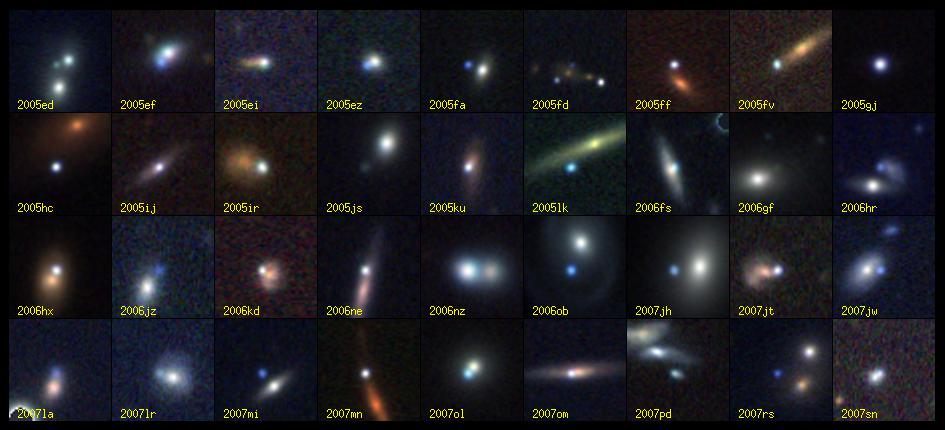
|
A mosaic showing 36 of the the 500+ Type Ia supernovae discovered by the Sloan Supernova
Survey. Each image is centered on the supernova, which usually stands out as a bright
point near or within the galaxy that hosts it. The light of the supernova, powered by the
thermonuclear explosion of a single white dwarf star, can outshine that of the tens of
billions of stars in its host galaxy. Type Ia supernovae have a
constant intrinsic luminosity (after a correction based on the time
over which their light rises and falls), so their apparent brightness
can be used to infer their distance. The primary goal of the Sloan Supernova Survey was
to measure the expansion of the universe
with high precision over the last four billion years of cosmic
history, to help understand why that expansion is speeding up over
time despite the decelerating gravitational effect of atoms and
dark matter.
|